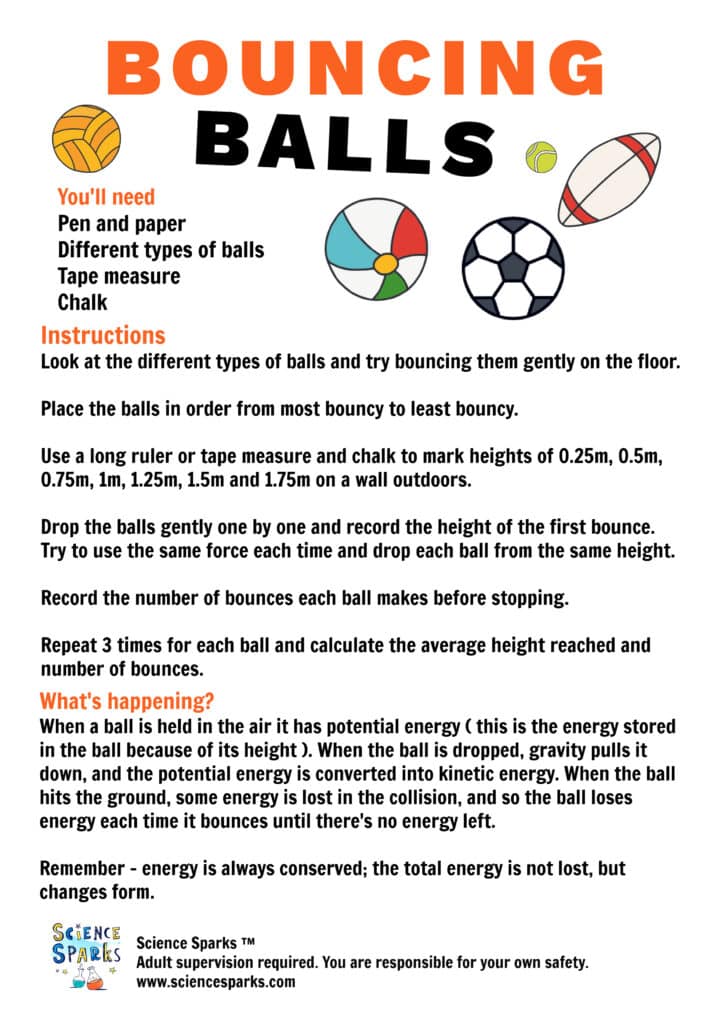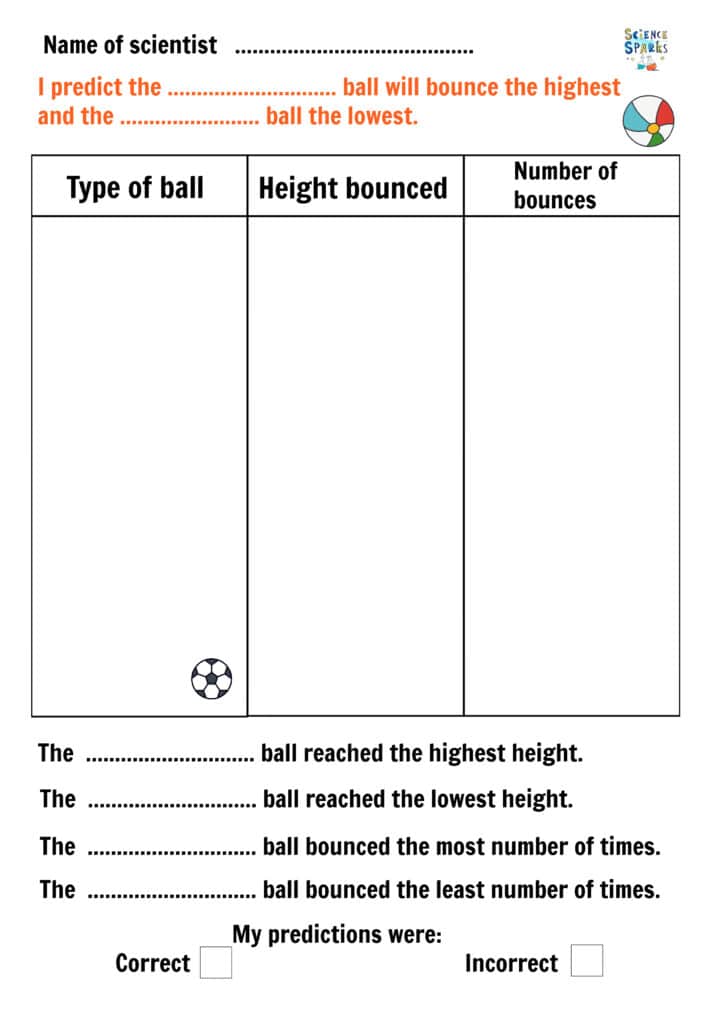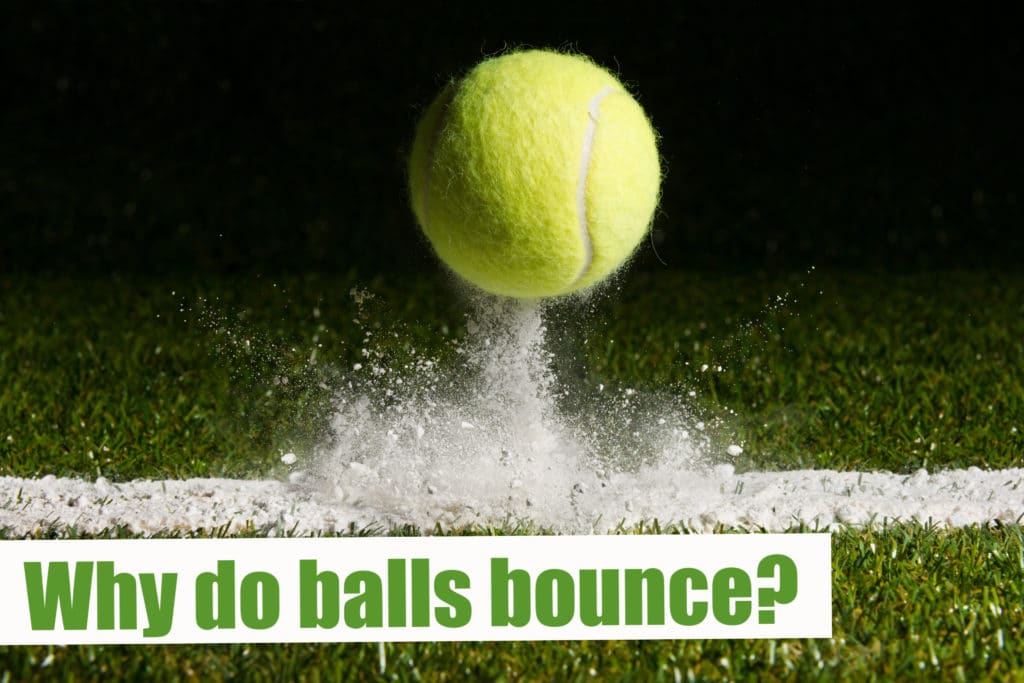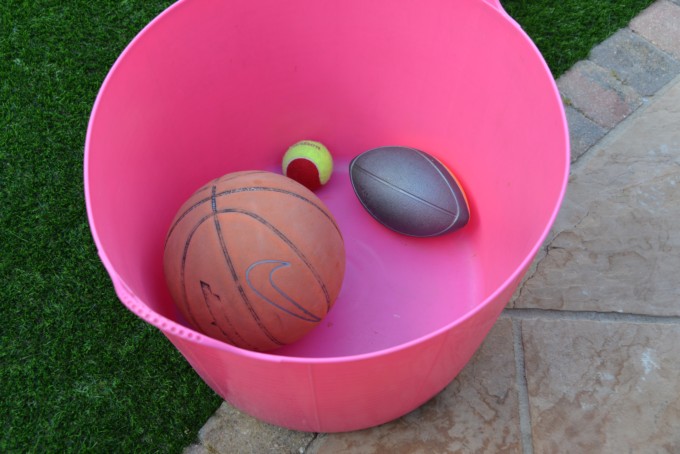Have you ever wondered why do balls bounce? This activity uses balls of different shapes to investigate how and why balls bounce differently.
I've included FREE instructions for a scientific investigation to find the most bouncy ball with a handy chart to record the results.
Balls to use:
- Rugby ball
- Football
- Tennis ball
- ping pong ball
- Basketball
- pumpkin ball
Look at the balls in different shapes and try to make them bounce on the ground. What did you notice?
Things to think about
Which ball do you think will be hardest to bounce in the direction you want it to bounce?
Are there similarities between the highest bouncing balls? What type of sport are they used for?
Can you bounce each ball in a container? Are some more difficult than others? Is this related to the type of game they are typically used for?
Why do balls bounce? Scientific investigation
This simple science experiment investigates how the shape and size of a ball affects the distance and duration of the bounce.
You will need to
pen and paper
Different types of balls
Measuring tape
Whiteboard
Instructions
Look at the different types of balls and try to make them bounce gently on the ground.
Place the balls in order from highest to lowest bounce.
Use a long ruler or tape measure and chalk to mark heights of 0.25 m, 0.5 m, 0.75 m, 1 m, 1.25 m, 1.5 m and 1.75 m on an open wall free.
Drop the balls gently one by one and record the height of the first bounce. Try to use the same force each time and drop each ball from the same height.
Record the number of bounces each ball makes before stopping.
Repeat 3 times for each ball and calculate the average height reached and the number of bounces.


More research ideas
Try dropping the ball without additional force and then apply force to find out when it bounces higher.
Notice which balls jump straight up and which bounce at an angle.
Remember: When comparing how different balls bounce, consider the conditions you must keep the same, such as the height from which the ball is dropped and the force used to drop it.
Why do balls bounce?
When a ball is dropped, gravity pulls it toward the ground, slowing it down so that each bounce becomes shorter and shorter until eventually the ball stops bouncing.
The force of the ball hitting the hard ground returns an equal force to the ball, meaning it bounces again. This happens because the balls are made of an elastic material, which allows them to be crushed or stretched and then return to their original shape. If the ball were made of a softer material, such as play dough, it would be flattened to the ground and would not bounce, or if it were made of a hard material, such as glass, it would break when dropped.
Why do the balls stop bouncing?
When a ball is held in the air, it has potential energy (this is the energy stored in the ball due to its height). When the ball is dropped, gravity pulls it down and the potential energy is converted to kinetic energy. When the ball hits the ground, some energy is lost in the collision, so the ball loses energy each time it bounces until there is no energy left.
Remember: energy is always conserved; The total energy is not lost, but rather changes form.
Extension ideas
Try bouncing your balls on different surfaces to investigate how changing the surface changes the bounce.
More sports science for kids
Test your reaction time Using only one ruler! It's a lot of fun to do it with a friend to find out who has the fastest reaction time. You can also investigate to see if your reaction time can be improved.
Try one of my 20 easy ones sports science research for children! These include finding out how much sugar certain drinks contain, how to keep bones strong and healthy, and even making a lung model.
Try this fun Research on jump rope lengths from Friends of Science.
We also have much more exciting scientific experiments attempt. I'd love for you to take a look!
Don't forget to tag me on social media if you try any of our easy science experiments for kids. We loved seeing them in action!

Last updated on June 14, 2024 by Emma Vanstone








Leave feedback about this